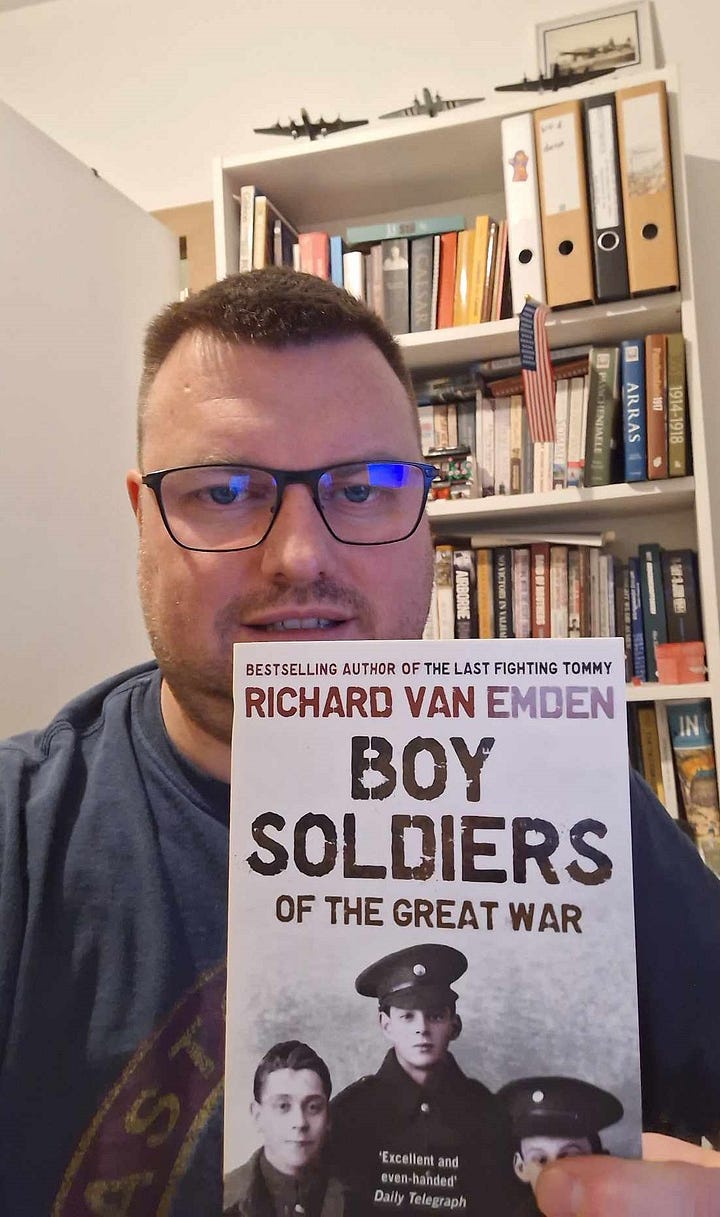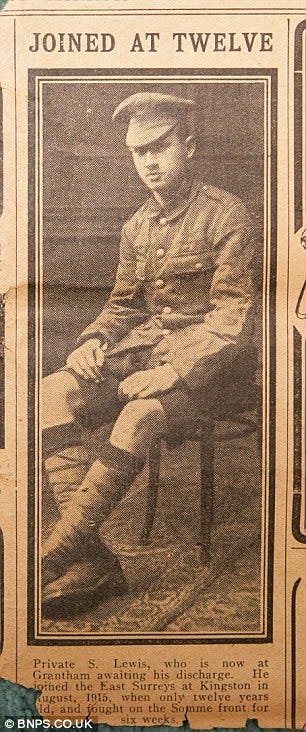During the Great War, there were many children that joined the forces of their country. There’s the Australian Reginald Garth who joined at 12, the Irish young man John Condon who joined at 14 or the Serbian Momčilo Gavrić who joined the army when he was only 8!
Sidney Lewis was one of those children that was eager to fight in the Great War. He was born in a Jewish family on 24 March 1903 in Tooting, London. He was the son of Edward JM Lewis and Fanny Russell and had four brothers and two sisters. The whole family shared three bedrooms. One of Sid’s brothers signed up with the East Surrey Regiment, so that created some space in the house for the rest of the family.
On 9 August 1915, Sid travelled a couple of miles to Wimbledon and walked into the recruiting center, where he told that he was a tailor and was 19 years old. They checked his height and weight and that was it, he was now a soldier in the British army. This happened when he was only 12 year and 4 months young.
It’s no secret that many parents allowed their underaged sons to join the army for several reasons. It was one less mouth to feed and they thought it might do them some good to be taught some discipline. But the parents were also often reassured that the soldiers could not be sent overseas until they were 19.
Sidney Lewis’ mother, however, had no idea where her son had gone and only found out a year later when a soldier that was home on leave mentioned that Sidney was fighting in the Somme region in the 106th Machine Gun Company. She immediately wrote to the War Office to demand Sidney to be sent home. As a proof of his age, she added his birth certificate showing he was only 13.
So Sid was in the Machine Gun Corps. They disembarked in Le Havre on 27 April 1916 and went straight into operation in the British offensive near Festubert in May. At the end of June, the company moved on to the Somme and ended up in the Delville Wood in July. Delville Wood was a terrible place to be, make sure you look up the events of Delville Wood during World War I to have an idea of what Sid went through.
Sid returned in September 1916, 13 months after enlisting in the army. But it didn’t end there. Sid re-enlisted with the Machine Gun Corps at the age of 15 and was part of the army of Occupation in Austria at the end of the war. And in World War II, Sid volunteered in a bomb-disposal unit.
Long after the war, there were people who doubted about his parents not knowing where their son was, though there is no proof of that off course. Richard van Emden, a historic author who wrote about boy soldiers, believes Sid’s parents knew pretty well that he enlisted and maybe even encouraged it. But they probably did not know that he was sent overseas, and hoped he was in a safe place in England.


In 2012 Van Emden wrote an article about his new book, ‘Boy soldiers of the Great War’. In this book he made a short remark about Sid. And back in the Great War, when the real age of Sid was known, there was a short article in The Daily Mirror about young soldiers where he is mentioned in too.
Sid received the British War Medal and the Victory Medal in 1918. After the war he became a sergeant on the Surrey police force and later ran a pub, the George Inn at Frant, near Tunbridge Wells. He married Ivy and they had one son, Colin. Sid hardly spoke about the war so little is known about his whereabouts. He died in 1969 at the age of 66.
Sources: londonremembers.com | esquire.com (Tim Lewis)






